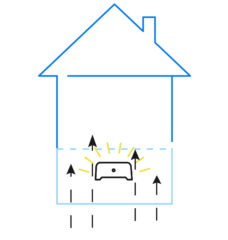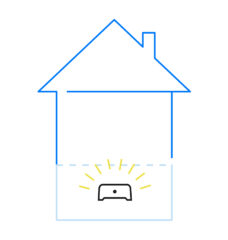How do I test my home?
Testing your home for radon is cheap, easy and effective. To figure out the amount of radon in your home, all you have to do is purchase a radon testing device through us. One of the most effective and simplest of tests is called an “alpha track” device, which, over 91+ days, will register the Bq/m3 of the indoor air of your home. It requires no electricity and is about the same size as a small hockey puck.
Place the device in the lowest level of your home that you or someone else spends about 4+ hours a day. This could be your basement, or perhaps the main floor. Do not place the radon test in kitchens, bathrooms, near open windows or other areas with fans or strong airflow. Areas of the home that no one spends time in (crawl spaces, furnace rooms, etc.) are also not ideal. A three-month radon test should only occur between the beginning of September to the end of May, as testing in summer can lead to inaccurate readings. However, an extended test (6 months or more) can be deployed at any time. After your test is complete, simply ship your device to a lab and within 3-6 weeks you should receive your confidential reading.






